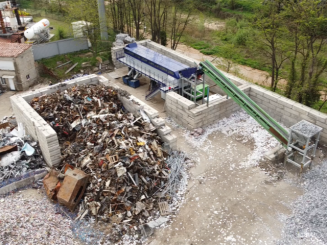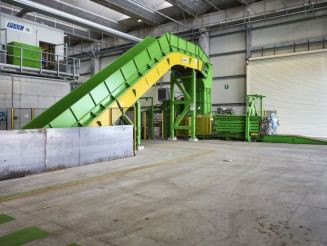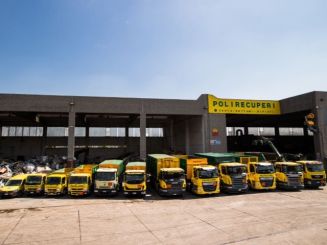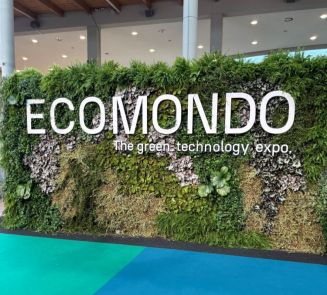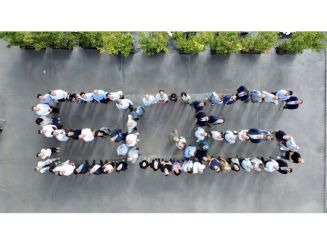CONAI Environmental Contribution for paper and cardboard packaging is reduced by over 50%
Having assessed the current scenario of the cellulose-based packaging recovery and recycling chain, CONAI’s Board of Directors has resolved to decrease the Environmental Contribution.

The contribution will decrease from EUR 55/tonne to EUR 25/tonne as from 1 July 2021 for all paper and cardboard packaging. The expected savings for users of this type of packaging exceeds 135 million Euros, on the 4.5 million tonnes put on the market.
The change in the contribution is mainly due to the increase in the market values of the secondary raw material: with the beginning of 2021, the prices of paper obtained from pulp have increased significantly with a consequent increase in consortium revenues from the sale of pulp.
A rebalancing of domestic consumption of waste paper of approximately one million tonnes, thanks to the opening of three new paper mills, has also contributed to making recycled paper even more attractive, dispelling the possibility of a downturn in its market values.
A positive economic situation that puts COMIECO, the National Consortium for the recovery and recycling of cellulose-based packaging, in a position to continue to guarantee the collection and management of paper and cardboard packaging waste even with a more than halved Environmental Contribution.
Subsidiarity with respect to the market
The favourable context makes it less necessary – in this case for paper and cardboard packaging – for the CONAI system to intervene.
A reduction in the quantities conveyed via the ANCI-CONAI agreements has in fact begun. The high values lead a number of operators to entrust the packaging from separate collection of paper and cardboard to the free market.
It is in cases such as this that the CONAI system retreats, leaving room for the market. On the other hand, it is when the market suffers, as happened last year with the beginning of the health emergency and the lockdown, that it once again has wider margins of intervention, guaranteeing the continuity of withdrawal of materials from separate collection under whatever economic and financial conditions.
Once again, the Consortium confirms its role of market subsidiarity.
Flat-rate/simplified procedures
The change will also have an effect on the flat-rate/simplified declaration procedures for imports of filled packaging.
From 1 July 2021, the Contribution through the flat-rate calculation on the weight of only the packaging of imported goods (total weight without material distinction) will decrease from EUR 107.00 to EUR 101.00/tonne. On the other hand, the rates to be applied to the overall import value (in EUR) for packaged food products (0.20%) and for packaged non-food products (0.10%) will remain unchanged;
The new values of the other flat-rate/simplified procedures affected by the change will soon be available on the CONAI website.
Polylaminates for liquids
For mainly paper-based polylaminates suitable for containing liquids, the Environmental Contribution will be reduced from EUR 75/tonne to EUR 45/tonne, since the additional contribution of EUR 20/tonne remains unchanged.
Other polylaminated packaging: four levels for contribution diversification
After having intervened in 2018 on polylaminates for liquids, CONAI continues in the contribution diversification process for mainly paper and cardboard-based composite – or polylaminated – packaging, in order to correlate the CAC with its actual recyclability and environmental impacts, as well as the emerging costs related to its end-of-life management.
CONAI’s Board of Directors has thus established the extension of the contribution diversification also for other paper-based composite packaging other than liquid containers.
The new diversification – which has been under analysis for approx. one year, as mentioned in September 2020 with the launch of the new declaration forms – will come into force on 1 January 2022.
Mainly paper-based composite packaging, other than that for liquids, has been divided into four types based on the weight of the paper component in the total packaging weight.
The first two types, A and B, with a paper component greater than or equal to 90 and 80%, respectively, they will pay the paper CAC (from 1 July 2021 reduced to EUR 25/tonne) and no additional contribution will be applied to them.
The third type, C, is that which qualifies packaging in which the paper component is greater than or equal to 60% and less than 80%. The recycling operations of this packaging are complex and costly: out of 100 kg of packaging, more than 60 kg become non-recyclable waste with the current state of technology.
As from 1 January 2022, packaging in this level will pay an extra-CAC of EUR 110/tonne.
The fourth type, D, is that of composite packaging in which the paper component is less than 60%: a percentage that compromises the recyclability of the packaging, making it impossible, with obvious consequences in terms of environmental impact. Indeed, in the recycling process, 100 kg of this packaging produces more than 85 kg of dry waste and almost 150 kg of wet waste to be disposed of in landfills, after consuming water and electricity.
For this packaging the extra contribution will therefore be EUR 240/tonne. Packaging whose paper component is not explicitly stated will also be included in level D.
Therefore, since this packaging cannot be recycled with paper and cardboard, the companies that produce and use it are asked to suggest on the label that it be disposed of in unseparated waste collection, in order to minimize the environmental impact linked to its end-of-life management.
Contribution diversification is one of the levers used to guide companies towards increasingly recyclable packaging.
The Aticelca (UNI standard) test as a future method for the classification of composite packaging with respect to its recyclability
As communicated, in this first phase of introducing contribution diversification based on the recyclability of composite packaging, the criterion adopted is the weight of the paper component.
In the long run, the shared desire is to apply a more precise and scientific criterion: the UNI 11743 standard laboratory test, the basis for application of the Aticelca 501 Evaluation System. For this reason, companies that verify the recyclability of their packaging with such a test will be able to use the result for classification into one of four diversification types.








